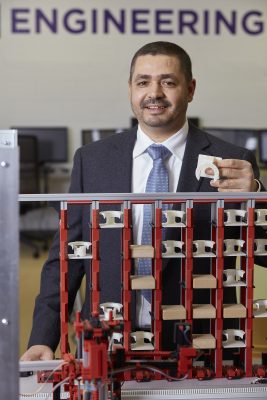
As Chair of the Department of Management Sciences, Professor Elhedhli is leading a multidisciplinary research program that spans areas like computer science and statistics but also builds upon operations research, a field that emerged during the Second World War when radar systems were introduced in Great Britain. In some respects, the objectives are the same – using information to make better decisions – but changes in computational power and the sophistication of how analysis is conducted promises far more powerful results.
Data is crude information. You have to mine it until it becomes like gas,” he said. “You take that gas to run an engine which is a decision model, and that engine will make you move ahead of everybody else.
The Game-Changing Differences Data Analytics Will Make
One of the department’s projects, for example, involves working with a major warehouse management systems company that provides some of the essential machinery used to store and retrieve products. Traditionally, trying to make a warehouse run better would mean working primarily with what you could physically observe and study.
In this case, however, the team is using data analytics to identify improvements you would not necessarily see or guess using classical engineering techniques. This includes data visualization to show where problems are, then developing operational efficiencies so that, for instance, the order fulfillment rate in a warehouse could go from 24 hours to 18 hours.
Of course, organizations have long used complex statistical models to do an analysis of price, products and quality to predict things like customer demand, but that’s really just trying to find the relationship between input and output. Elhedhli sees the work of the Department of Management Sciences tackling much bigger challenges through data-driven process re-engineering and value-added strategic changes.
Data analytics works is case-by-case to the organization. It’s a consulting job,” he explains. “You have to look at the data, the data has to scream out to you with what problems there are and what possible models you can apply, and then you propose something based on it.